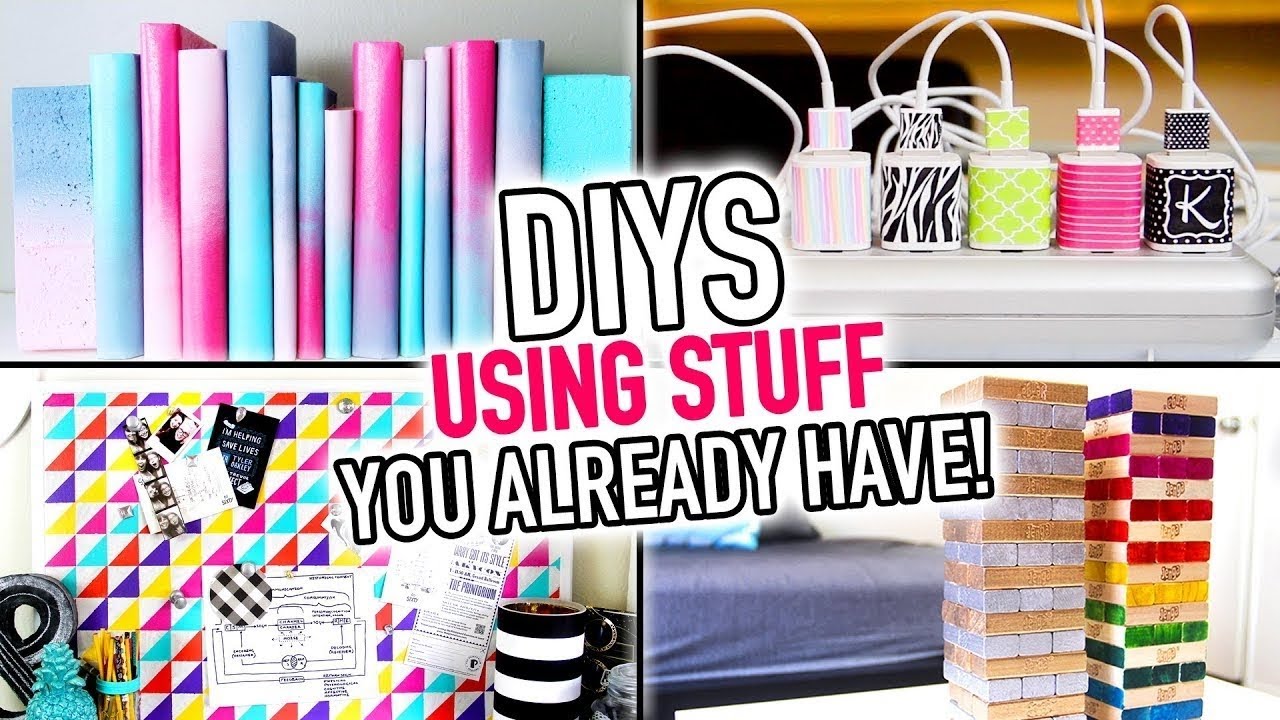DIY stuff is more than just crafting; it’s a journey of self-expression, problem-solving, and creating something unique. Whether you’re a seasoned maker or a curious beginner, the world of DIY offers endless possibilities to transform your home, enhance your skills, and bring your ideas to life.
This guide explores the diverse realm of DIY, from simple beginner projects to advanced techniques and resources. We’ll delve into popular categories, essential tools, and inspiring ideas, empowering you to embark on your own DIY adventures.
DIY Projects for Beginners
Embarking on a DIY journey can be incredibly rewarding, but it’s important to start with projects that are manageable and build confidence. Choosing beginner-friendly projects allows you to learn basic skills and techniques without feeling overwhelmed.
Benefits of Starting with Simple Projects
Starting with simple DIY projects offers several benefits:
- Builds Confidence: Completing a simple project successfully boosts your confidence and motivates you to tackle more complex projects in the future.
- Introduces Basic Skills: Simple projects introduce you to fundamental DIY skills like measuring, cutting, and assembling, laying the groundwork for more advanced projects.
- Provides Hands-on Experience: Practical experience is crucial for learning DIY. Simple projects provide opportunities to get your hands dirty and learn through trial and error.
- Reduces Fear of Failure: Starting small minimizes the risk of costly mistakes. If a simple project doesn’t turn out perfectly, you can easily start over or adapt the design.
- Encourages Experimentation: Simple projects allow you to experiment with different materials, techniques, and designs without significant investment.
Choosing Beginner-Friendly Projects
Choosing projects based on your interests and skill level is essential. Consider these factors:
- Interests: Choose projects that align with your hobbies or areas of interest. For example, if you enjoy gardening, try building a simple planter box.
- Skill Level: Start with projects that require basic tools and techniques. As you gain experience, you can gradually move on to more challenging projects.
- Time Commitment: Select projects that fit your available time. Simple projects can be completed in a few hours, while more complex projects may take several days or weeks.
- Budget: Consider the cost of materials and tools. Simple projects often require minimal investment, making them budget-friendly.
5 Simple DIY Projects for Beginners
Here are five simple DIY projects suitable for beginners:
- Planter Box:
- Materials: Wooden boards, screws, wood glue, paint or stain (optional), potting soil, plants.
- Instructions:
- Cut wooden boards to desired size and shape.
- Assemble the boards using screws and wood glue.
- Sand the edges for a smooth finish.
- Paint or stain the planter box (optional).
- Fill the planter box with potting soil and plant your favorite flowers or herbs.
- Wall Shelf:
- Materials: Wooden boards, screws, brackets, level, drill, paint or stain (optional).
- Instructions:
- Cut wooden boards to desired length and width.
- Attach brackets to the wall using screws and a level.
- Place the wooden board on top of the brackets.
- Paint or stain the shelf (optional).
- Birdhouse:
- Materials: Wooden boards, screws, drill, paint, birdhouse roof shingles (optional), bird feeder (optional).
- Instructions:
- Cut wooden boards to create the birdhouse base, sides, and roof.
- Assemble the birdhouse using screws and drill.
- Paint the birdhouse with vibrant colors.
- Add a birdhouse roof using shingles or a simple design.
- Attach a bird feeder to the birdhouse (optional).
- Coasters:
- Materials: Cork tiles, fabric scraps, glue, scissors, felt (optional).
- Instructions:
- Cut cork tiles to desired size and shape.
- Cut fabric scraps slightly larger than the cork tiles.
- Glue the fabric scraps onto the cork tiles.
- Trim any excess fabric.
- Glue felt onto the bottom of the coasters (optional).
- Picture Frame:
- Materials: Wooden molding, miter saw, wood glue, nails, paint or stain (optional), picture.
- Instructions:
- Cut wooden molding to desired size using a miter saw.
- Assemble the frame using wood glue and nails.
- Paint or stain the frame (optional).
- Insert the picture into the frame.
DIY Tools and Materials: Diy Stuff

Embarking on a DIY journey necessitates having the right tools and materials at your disposal. Whether you’re a seasoned pro or a novice, understanding the essential tools and their applications is crucial for success.
Essential DIY Tools, Diy stuff
Having the right tools is fundamental to completing DIY projects successfully. Here’s a list of essential tools that every DIY enthusiast should consider:
- Measuring Tools: Measuring tapes, rulers, levels, and protractors are vital for ensuring accuracy and precision in your projects.
- Cutting Tools: Saws (hand and power), utility knives, shears, and chisels are used for cutting various materials.
- Drilling Tools: A drill, drill bits, and a screwdriver set are essential for creating holes and fastening screws.
- Fastening Tools: Hammers, nails, screws, and a variety of fasteners are necessary for securing materials together.
- Hand Tools: Pliers, wrenches, screwdrivers, and a multi-tool are indispensable for a variety of tasks.
- Safety Equipment: Safety glasses, work gloves, dust masks, and ear protection are crucial for safeguarding your health while working.
Selecting the Right Tools
Choosing the appropriate tools for your project is essential for achieving the desired results and ensuring safety. Here are some tips for selecting the right tools:
- Project Requirements: Consider the specific materials you’ll be working with, the size and complexity of the project, and the level of precision required.
- Budget: Determine your budget and choose tools that offer the best value for your needs. Consider investing in quality tools that will last longer and perform better.
- Frequency of Use: If you plan to undertake DIY projects regularly, investing in a wider range of tools is advisable. However, if you’re a casual DIYer, you may opt for a more limited set of essential tools.
- User Experience: Choose tools that are comfortable to use and have features that suit your individual preferences.
Safety Precautions
Safety should always be a top priority when using DIY tools. Here are some essential safety precautions to follow:
- Read the Instructions: Carefully read the manufacturer’s instructions before using any tool. This will help you understand its proper operation and safety precautions.
- Use Appropriate Protective Gear: Always wear safety glasses, work gloves, dust masks, and ear protection to protect yourself from potential hazards.
- Maintain Tools Properly: Regularly inspect and maintain your tools to ensure they are in good working condition. Sharp tools and properly functioning equipment are safer to use.
- Be Aware of Your Surroundings: Keep your workspace clean and organized, and be mindful of your surroundings to avoid accidents.
- Don’t Use Tools While Tired or Under the Influence: Never use tools if you are tired or under the influence of alcohol or drugs. This can lead to accidents and injuries.
Epilogue
From learning new skills to crafting personalized gifts, DIY offers a rewarding experience that combines creativity, practicality, and a sense of accomplishment. Embrace the world of DIY, explore its possibilities, and unleash your inner maker. Let your imagination be your guide, and enjoy the journey of creating something truly special.
DIY projects are a great way to unleash your creativity and bring unique touches to your home. If you’re looking for budget-friendly ideas, consider incorporating scrap wood projects into your next endeavor. With a little imagination and some basic tools, you can transform leftover wood into functional and decorative pieces that add personality to any space.




